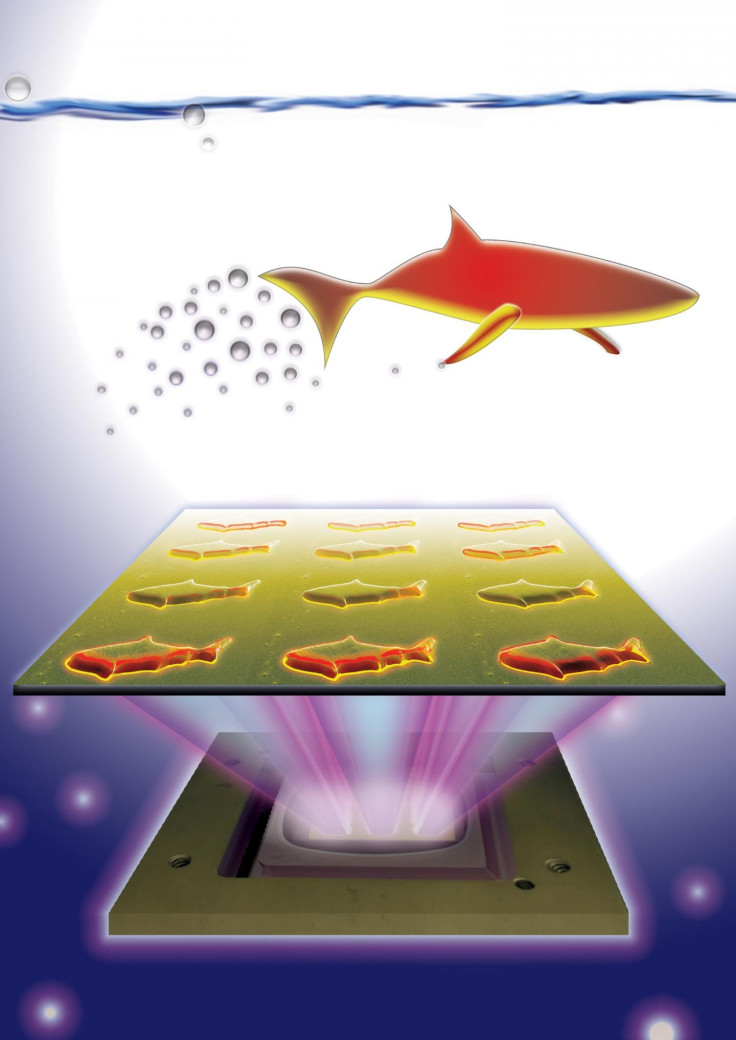Robotic Drugs? 3D-Printed 'Fish Bots' Made With Platinum Nanoparticles Can Swim Through Blood To Remove Toxins

In the future, robots will be handling a lot of things. They’ll be driving us places, serving us drinks, cutting our lawn, and more. The world of medicine is not immune to the charm of robots either, and soon enough they’ll be handling surgeries, prescribing you with medications and swimming through your bloodstream depositing drugs where they’re needed. Wait, what? That’s right, some day in our bright future, you’ll have 3D-printed microfish swimming around your bloodstream.
Smaller than the width of a human hair — 120 microns long by 30 microns thick — these little fish will one day find themselves coursing through your veins, removing toxins and delivering drugs to certain parts of the body. In a study published in Advanced Materials, researchers showed that the little "microfish" are made with platinum nanoparticles in their tails, which when combined with hydrogen peroxide, causes the tails to move. Iron oxide particles in their heads allow the fish to magnetically steer themselves through your bloodstream.
"We have developed an entirely new method to engineer nature-inspired microscopic swimmers that have complex geometric structures and are smaller than the width of a human hair," said the co-first author Wei Zhu, a nanoengineering Ph.D. student at the Jacobs School of Engineering at UC San Diego, in a press release. "With this method, we can easily integrate different functions inside these tiny robotic swimmers for a broad spectrum of applications."
The nature-inspired part of that quote is rather interesting. Zhu and his team created the fishes first but are also working on other sea creatures, such as sharks and sting rays. They didn’t say what the purpose of the different creatures would be, but one would guess they could all serve different functions or just be switched for patient preference.
To prove that the fish are good at cleaning up toxins, the researchers put toxin-neutralizing nanoparticles — specifically polydiacetylene (PDA) nanoparticles, which capture harmful pore-forming toxins such as the ones found in bee venom — throughout the bodies of the fish. The powerful swimming of the fish in solution displayed their ability to clean up toxins. When the PDA nanoparticles combine with toxin molecules, they glow bright red. This allowed the researchers to identify how well their fish were doing at cleaning up those toxins, based on the intensity of the red glow.
The only disappointing part of the whole “the future will be full of robots” dialogue is that the future is still a ways away. These microfish won’t be swimming in your bloodstream anytime soon, so don’t hold your breath.
Source: Wei Zhu, Jinxing Li, et al. 3D-Printed Artificial Microfish. Advanced Materials. 2015.



























